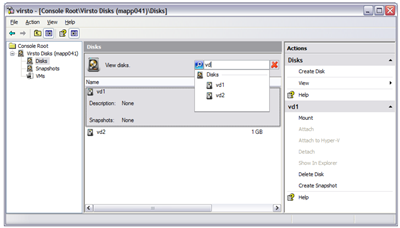A new US startup entered the virtualization market in mid-February: Virsto.
Founded in 2007 and sustained by a $8.5M investment led by August Capital and Canaan Partners, the company is managed by Mark Davis, former CEO of Creekpath Systems (acquired by Opsware, which was then acquired by HP). Davis also served as Vice President of Marketing at Monosphere, acquired by Quest.
Davis is leading an interesting team of managers and advisors, which includes the co-founder and CTO Alex Miroshnichenko (former CTO at Acronis), the co-founder and Vice President of Engineering Serge Pashenkov (former Senior Director of Software Development at PowerFile and Veritas – acquired by Symantec), the Vice President of Sales Rafael Santini (former VP of Worldwide OEM Sales at XenSource – acquired by Citrix), and the advisors Frank Artale (current Vice President of Business Development at Citrix), James Phillips (co-founder and former CEO of Akimbi – acquired by VMware) and Shaw Chuang (former R&D Executive at VMware).
This team developed a solution to improve efficiency and performance of Hyper-V virtual machines, by hijacking and optimizing their interaction with the underlying storage.
Virsto One in fact is a lightweight solution (10Mb) that installs inside the Hyper-V parent partition and places a filter driver between VMs virtual hard drives (VHDs) and physical volumes (no matter where they are and what storage protocol is used to reach them).
To hijack VMs I/O stream, Virsto creates fake VHD files (this is done through a snap-in for the Hyper-V console) that administrators must map to virtual machines in place of standard Microsoft VHDs.
Nor the virtual machine neither its guest operating system recognize the difference: the Virsto VHD containers have the same properties of standard VHDs.
What happens behind the scene is that all the data a VM saves inside a fake VHD is actually redirected to the Virsto filter driver, which optimizes it before sending it to the physical storage volume.
The optimization Virsto is talking about here consists in three things:
- unlimited snapshots with zero performance impact
Virsto claims the capability to generate thousands of thousands of snapshot (and thus of VM clones), in deeply nested structures, without the degradation seen in VMware environments. - I/O flow control for up to 5x performance
Virsto believes that a key issue impacting the virtual machine performance when accessing storage is the randomness of data stream. When multiple VMs concurrently try to access the same physical volume, the hypervisor has to randomize the guest OSes I/O flows and this may reduce throughput up to 80%.
The Virsto filter driver intercepts and controls all guest OSes data streams by journaling their I/Os and then sequentially writing them to the physical volume. - integration with Live Migration and Windows VSS
Virsto One supports Hyper-V Cluster Shared Volumes (CSVs) and live migration, and it comes with a Volume Shadow Service (VSS) provider to integrate with 3rd party backup solutions.
In some way this could be considered an approach similar to the one VMware took with its Consolidate Backup (VCB) proxy.
The difference is that while VMware is discontinuing VCB, Virsto is so confident about the approach that it claims storage costs can be cut by more than 50%, achieving 3x-5x server consolidation ratios than with VMware.
Virsto One is licensed per server, with pricing starting at $1,250 (for up to 2 sockets) and reaching $5,000 for unlimited sockets.
The decision to support Hyper-V rather than ESX at its first release is quite interesting and definitively different from what the large majority of virtualization startup do at launch.
This choice may depend on technical issues to hijack the access to VMware VMFS volumes, but it’s clear that Virsto is trying to leverage the opportunity to be the first player in a market where there are no competitors.
Of course the big risk for the company is that Hyper-V will never be adopted by the kind of customers that have the storage problems Virsto is trying to solve.


